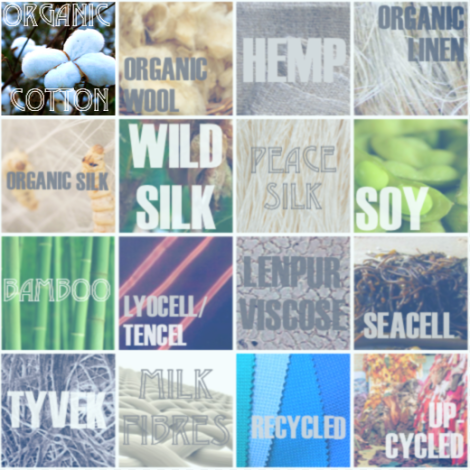We know it can be difficult to understand exactly what sustainable fashion means. As Bronwyn Darlington, 1MW Ambassador and our sustainable fashion expert says...
Sustainable fashion is an umbrella term that encompasses the processes aiming to reduce the negative environmental and social aspects of our clothing at the production and consumption stages... It's a holistic approach to improving and maximising the positive actions of our clothing in its lifecycle."
Fashion and clothing production is a huge contributor to climate change because of the carbon pollution involved in each step of fashion's journey (known as fashion miles) from fibre/fabric growth, manufacture and production, and finally consumer delivery.
Especially the material your clothing is made from plays a BIG role in it's environmental impact! We have recognised many people are not sure what sustainable materials to look out for! There is so much research being done to create new materials, or sustainable alternatives of ones we already know, so we thought a great topic for our next Susta-Style series would be a - 1MW Guide to Sustainable Fabrics. We are going to breakdown the most important sustainable fabrics being used today, and also shine a spotlight on fabric innovations that lie ahead in the future.
Organic Cotton is the first sustainable fabric we will look at.

Conventionally cotton is one of the most checmical-laden grown crops in the world. Organic cotton is grown using methods and materials that have a low impact on the environment. If cotton is to be sold as organic, it requires a third party certification from independent, accredited certification agencies.
Organic production systems:
- Replenish and maintain soil fertility
- Reduce the use of toxic pesticides and fertilizers
- Build biologically diverse agriculture

What to watch out for:
Retailers often won't tell you every part of a garment's story. If you are purchasing organic cotton and it's not also fair trade assured, or it's processed and treated with conventional dyes or nasty chemicals, then it's still leaving a sizeable carbon footprint on the earth. Sometimes it will be an organic cotton blend (which is still better, but means it could contain polyester or other fabrics created from petrochemicals). What you can do:- Try to buy %100 organic cotton items.
- Wherever possible, try to buy organic cotton in the shades it's naturally grown in: cream, pale green, & light brown. Not dyeing the fabric reduces the environmental impact.
- OR look for garments that are coloured using natural or vegetable-based dyes (this is getting popular again, it's a fun thing you can do at home too)
- Look for credible lables such as ACO (Australian Certified Organic) or GOTS (Global Organic Textile Standard) meaning the product is certified organic, sustainable, and eco-friendly.
Look out for next weeks Susta-Style post on Organic Wool.
*Fact from The Research Triangle Park
Don’t forget to head over to our website! We are daughters, mothers, sisters and grandmothers getting on with practical climate action to live better for us and the planet. Join the movement at www.1millionwomen.com.au
- Susta-Style is a weekly post on sustainable fashion, shopping and design.
